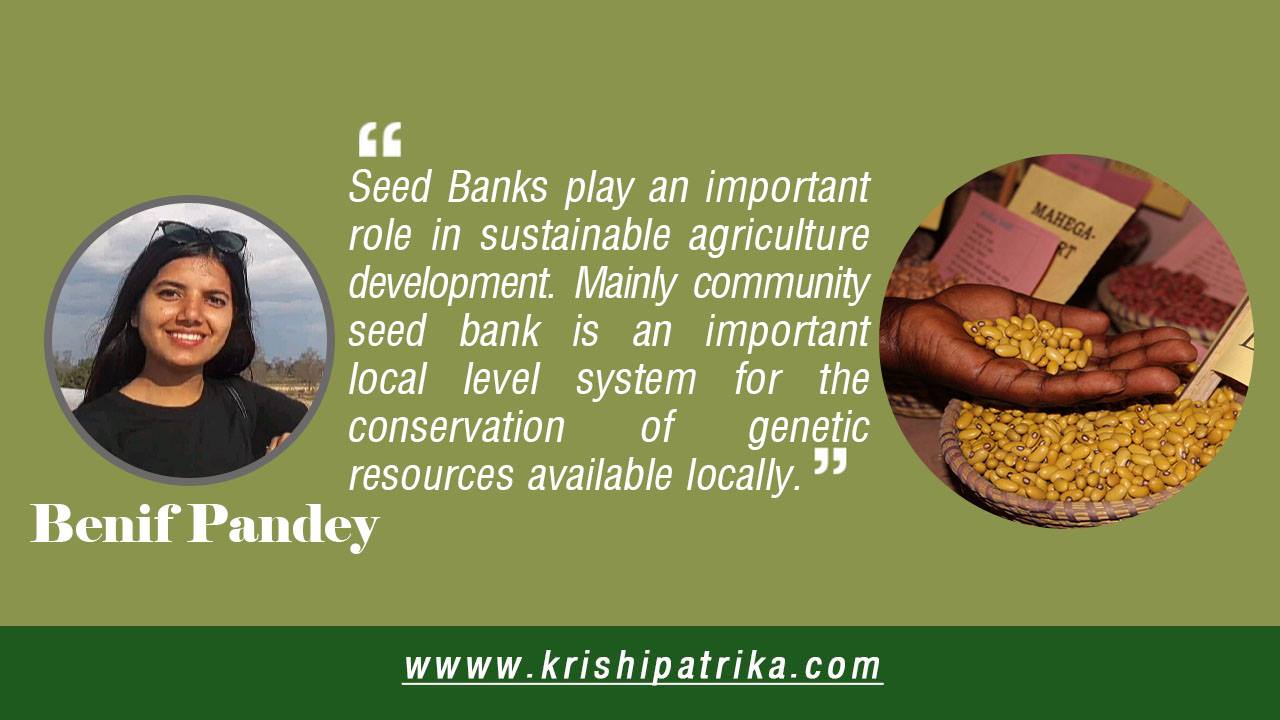
Nepal is a landlocked country and borders with China in the north and India in the south, east, and west. Nepal has a diverse geography, including subalpine forested hills and fertile plains. The ongoing global pandemic of COVID19 is caused by SARS-CoV-2. After the outbreak of COVID19 in Wuhan city, China in December 2019, it was recognized as a pandemic on March 11, 2020. Like other countries, the Government of Nepal decided to lock down the whole country including suspension of all academic activities, border closures, and travel restrictions. This decision helped to prevent health emergency in a very early situation, however, Nepal could be on the brink of hunger. Nepal relies on neighboring countries such as India and China for foods like wheat, rice, and other pulse crops.
At the base of all our food is the seed and without it, the world would go hungry. As seeds hold the power to regenerate species, promote biodiversity, and enable ecosystems to adapt to the changing world, its conservation is important.
Seed Bank is thus defined as a place where seeds are stored to preserve genetic diversity so, it is a type of gene bank. The main aim of the seed bank is to conserve biodiversity so that plant breeders can increase yield and produce disease resistance, drought-tolerant, nutritional, and qualitative varieties. Also, seed bank helps to forestall loss of genetic diversity and preserve historical and cultural value.
How does Seed Bank work?
Seed banks provide necessary for the longevity of seeds. Seeds are thus stored under low temperature that keeps seed dormant till they are needed for replanting. It’s easy for the plant to be stored in their seed form since they are small and therefore they occupy minimum space. This makes it possible to store a huge variety of seeds.
Advantages and Role of Seed Bank:
It is well understood that Seed Bank is the system of conservation and utilization of genetic resources and conserve associated with traditional knowledge evolutionarily. The options of planting materials provided by seed banks to the farmers are considered an important approach to increase the production of crops at a worldwide level. Seed Banks play an important role in sustainable agriculture development. Mainly community seed bank is an important local level system for the conservation of genetic resources available locally. Following are the major advantages and roles of Seed Bank:
- Seed banks play an effective role in the preservation of crop diversity, protection from climate change, natural disasters, and also provide seed material for research purposes.
- Seed bank helps to conserve local landraces as well as improved varieties through continued utilization.
- Samples stored in the CSB are considered safety duplicates because many of these accessions are generally stored in the national gene bank.
- It supports the preservation of rare and endangered landraces.
- All farmers have easy access to planting materials when they are needed.
- Poor farmers do not need to store seeds for planting.
- It helps to increase the adaptability of local landraces.
- Farmers have selection options: seed banks as well as diversity blocks.
- Farmers have access to information regarding landraces and improved varieties.
- All the local farmers have access to information on what planting materials are available at the local level.
- The use of seed bank technology transfer and. genetic resource characterization can be effective.
Importance of Seed bank in the Current Pandemic Situation:
As the current Covid-19 pandemic effects go well beyond what we traditionally call a health crisis, affecting the global economy and it may lead to the food shortage in near future. Global supply chains, however, have taken a hit. According to the Global Report on Food Crisis 2020, weather extremes and the economic shortage have become increasingly significant as the main driver of the food crisis. The statistics reveal that weather extremes and pandemic situations are the key factors in explaining food insecurity for over 34 million people across the globe.
In this sense, Seed bank mainly Community Seed Bank (CSB) plays an effective role in the preservation of local landraces and their proper utilization in near future to maintain food security. Around the world, CSB is helping farmers and communities to regain, maintain, and increase their control over the seed they use. It supports the creation of a resilient local food system thus becoming a major factor in times. Thus, the seed bank model can constitute an efficient worldwide solution to support the resilience of the production system and protect genetic diversity.
Last but not least farmers must continue to conserve and select new genetic resources that are more resistant and suitable for a local need which helps to cope with this pandemic effect and climate change and keep agriculture productive.
Seed banks can therefore be understood as an attempt to salvage the latent value of genetic diversity. It’s an instrument tool for the preservation of valuable resources and plays a significant role to maintain food security. As decisions about how to salvage the past are always, necessarily, about how we value the future.









